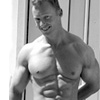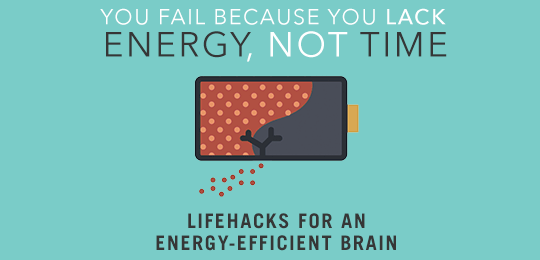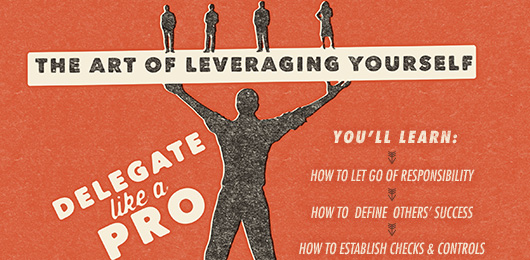Brad is a university lecturer with a master’s degree in Kinesiology and is a Certified Strength and Conditioning Specialist (CSCS) with the National Strength and Conditioning Association (NSCA). He has competed as a drug-free bodybuilder, is a cancer survivor, and a 21 year veteran of the Air National Guard. Brad has been a Primer contributor since 2011.
If you’re not seeing fitness results and you feel like you’ve tried every program in the book then you might want to treat your situation like a doctor’s appointment and have someone diagnose what’s going on. Oftentimes it’s not the overall program itself that is the problem. There could be several smaller variables at play.
How long are you resting? What is the rep range you’re using? Are you doing too much volume? Do you have a clear goal set? These and many others could be sabotaging your best efforts. Without breaking down some of these specifics you’ll simply be spinning your wheels and program-hopping with no end, or results, in sight.
Not everyone can afford a good trainer to get a proper diagnosis, but I want to come as close as possible as if you walked into my office and said, “I need your help.” Let’s break a few things down and see if we can’t get to the bottom of this—deep breath.
Resistance Training Variables
I want to briefly go over what we like to call in the strength coaching business resistance training variables. These are pieces of a training program that are adjusted to fit a desired outcome. Whether your goal is to get stronger, add muscle, develop more power, or even increase your capacity for muscle endurance, think of these as your control panel, your battle plan of execution.
These are general guidelines to get even the beginner off the ground. Of course, there’s always wiggle room for personal preference, but take these as a starting point. Later we’ll put together a program as your prognosis.
1. End goal
Let’s first start with the end in mind. What is your ultimate goal? Is it to gain muscle and reshape your physique? To get stronger? Feel better and be healthier? Maybe a combination of all three? There are many more to choose from, but most individuals want to change their bodies and feel better. Let’s go with that.
You’ll want to adopt a goal of building muscle and strength. As far as training goes that is the best direction to head in. Nothing will change your physique more effectively than hypertrophy training (building muscle). Don’t worry about becoming too muscle-bound. That’s tougher than it sounds and requires you to take other avenues we’re not willing to go down.
2. Loads/reps
Load and rep range are rather synonymous. If you are using heavier loads, you won’t be able to perform many reps. And the opposite is true as well. For our purposes, we’ll stick to a moderate rep range of 8 to 12 for hypertrophy reasons.
If you like to lift heavier, and your joints are in good shape, then go for it. If you’re like me and have some miles on your joints then go with a higher rep range. I like to stay between 10 and 20 for most exercises.
The range isn’t as important as how you perform these reps and rest periods. Achieving or getting as close as possible to momentary muscular failure is the key.
No matter the rep range studies have concluded that the common denominators for hypertrophy gains are how you manipulate rest periods and shooting for failure on most sets. More on that next.
3. Rest
From my experience and what I’ve seen at countless gyms is the complete lack of attention rest periods get. Look around the gym and you’ll see people carrying on entire in-depth conversations between sets. This is especially true for the bigger lifts like bench presses and squats. Lifters feel that if they rest for longer periods on the bench press, for example, they’ll get bigger and stronger as a result.
Yes, if your goal is to be a powerlifter and get as strong as possible without regard to your physique, then rest for three, four, or even five minutes between sets. But if you want to put on an appreciable amount of muscle then you’ll need to pay closer attention to how long you rest. For hypertrophy reasons, rest around one to two minutes between sets.
When it comes to building muscle, strength does have a role, but so does recruiting as many muscle fibers as possible and fatiguing those fibers. Think of it as training your body versus lifting weights. That’ll enable you to not worry so much about how much you’re lifting.
→ Read: 30+ Years in the Gym Condensed: A Strength & Conditioning Coach’s 10 Essential Tips
4. Volume
Simply put, volume is the amount of sets performed in a given workout. Some coaches will take this a step further and factor in the amount of reps into the equation and some will even go further and throw in the amount of weight used. Here we will keep things simple and only look at sets.
Volume is another variable that gets abused and neglected at the same time. It’s abused in respect to its overuse for vanity muscle groups namely the chest and biceps. Lifters will perform countless sets for both of these areas. Volume is neglected when it comes to lower body training.
You guessed it; lifters will often include an embarrassingly low amount of sets for their legs.
Moderation is king when it comes to volume. A general rule of thumb is to start with the lowest effective dose and then go from there. For example, start with six to 10 sets for larger body parts such as chest, back, and quads, and six to eight for smaller areas like arms, shoulders, and calves.
5. Frequency
Frequency is another misunderstood variable and one that gets forgotten quite easily. Manipulated correctly, it can be one of your most potent weapons when wanting to build muscle.
How? By doing a little simple math.
Most lifters adopt the practice of training each body part around once per week. In a year that equates to 52 times that you stimulate the entire body. That’s 52 opportunities to grow. But what if you trained everything twice per week? Yep, that’s 104 times per year of stimulated growth.
And three times per week there are 156 opportunities. There is a point of no return, however, when it comes to how much the body can tolerate, repair, and grow plus the challenges that life throws at you.
So, for our real-world purposes. We’ll stick with covering every body part twice per week.
6. Selection
Now that we have all of the nuts and bolts in place we can now build out some of the most optimal, effective exercises to place into our program. Most exercises work whether your goal is strength, hypertrophy, power, or endurance. It’s more about all of the variables above and how you perform them, but there still are some better choices if you want to build some appreciable muscle.
It’s best to stick with ones that are multi-joint and will work the most muscle at once. These will include all pressing movements for the chest and shoulders, rows and deadlifts for the back, and squats, leg presses, and lunges for the legs. Add in a few single-joint moves for arms and calves and you’ll have a well-rounded routine.
The key isn’t to crush every single workout, that’s unrealistic and will only lead to burnout. The key is showing up every day and putting in work to the best of your ability.
Execution
As important as the resistance training variables are, there is one factor that can either make or break all of them. That is consistency.
You can build the very best plan replete with the most optimal variables but without consistency, it will never be as effective as it could be.
Building a solid habit of training on each planned day, putting in the requisite work, and practicing proper recovery will push you more toward your goal than anything else.
Even when you have lackluster days in the gym where you’re not “feeling it” or are low energy, that habit of consistency will propel you forward and have a great impact in the long term.
The key isn’t to crush every single workout, that’s unrealistic and will only lead to burnout. The key is showing up every day and putting in work to the best of your ability.
How to progress
One of the most asked questions I get is how to progress on a program.
In the strength and conditioning coaching world, we have a simple and effective process of how to do this. It’s called the 2 for 2. That is, once you get two reps over your rep range consistently for two consecutive workouts you increase the weight by a small increment for the next workout.
For the upper body, it can be an increase of 5 to 10 pounds and for the lower body, you can increase 10 to 20 pounds.
The workout
The following sample workout is based on training four times per week (Monday, Tuesday, Thursday, and Friday) hitting each body part twice. Feel free on Wednesdays and the weekends to do light recreational activities. Rest one to two minutes between sets.
Monday and Thursday
- Incline barbell or machine press 3 sets of 8-12 reps
- Flat dumbbell press 3 sets of 8-12 reps
- Close-grip pull up 3 sets of as many as possible
- Bent over barbell or machine row 3 sets of 8-12 reps
- Seated dumbbell shoulder press 3 sets of 10-15 reps
- Dumbbell shrug 3 sets of 10-15 reps
- Exercise ball or floor crunch 3 sets of 20
Tuesday and Friday
- Single leg dumbbell calf raise 3 sets of 10-15 reps
- Barbell squat or leg press 3 sets of 8-12 reps
- Lying leg curl 3 sets of 8-12 reps
- Barbell or dumbbell curl 3 sets of 8-12
- Triceps cable press down 3 sets of 8-12 reps
- Hanging or lying leg raise 3 sets of 20
In closing
If something isn’t working it’s worth it to take the above steps and self-diagnose what’s going on in your program. Apply each variable, pay close attention to your execution, and work hard to create the habit of consistency. With a little patience, you’ll be well on your way to making progress once again.
















